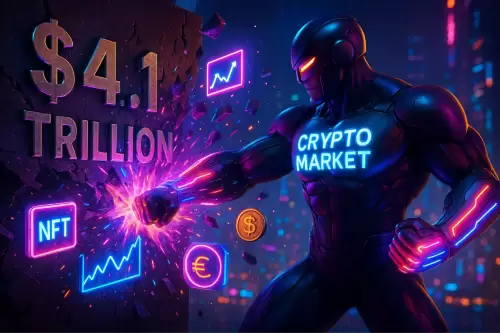 |
|
 |
|
 |
|
 |
|
 |
|
 |
|
 |
|
 |
|
 |
|
 |
|
 |
|
 |
|
 |
|
 |
|
 |
|
Cryptocurrency News Articles
Vitalik Buterin Proposes Changes to Ethereum Nodes
May 19, 2025 at 05:56 pm
Ethereum co-founder Vitalik Buterin has released a new proposal pushing the use of stateless nodes to scale the Ethereum Layer 1 (L1) network
In a recent blog post, Vitalik Buterin, co-founder of Ethereum, has proposed several changes to the Ethereum network to foster its efficient scaling without undermining decentralization or user privacy.
As L1 gas limit increases and ZK-EVMs offer scalable verification, local nodes become crucial for private, uncensored blockchain interaction.
To cope with this, Buterin suggests stateless nodes. These nodes would validate blocks without maintaining full Merkle branches, instead focusing on parts of the blockchain data pertinent to each user.
This hybrid approach, offering greater security than light clients and using less storage than full nodes, seems like a good middle ground.
To transition toward a stateless future, Buterin recommends EIP-4444. This proposal reduces the time period for which nodes store old blockchain data, cutting down on used disk space.
He also supports a shared archival network that uses erasure coding to ensure past data remains accessible.
Moreover, Buterin proposes adjustments to Ethereum’s gas fees. By increasing the cost of creating new states and decreasing execution costs, the changes would shift developer incentives and help reduce unnecessary blockchain growth.
Stateless nodes could be tailored to each user. People could choose which parts of Ethereum’s data to keep, like specific ERC20 tokens, DeFi apps, or recently used wallets. These nodes could also answer local RPC requests, boosting privacy and cutting down reliance on centralized services.
Earlier this month, Buterin said Ethereum should adopt a simpler structure, similar to Bitcoin’s. He noted that the cryptocurrency’s design is so straightforward that even high schoolers can understand it, a clarity that Ethereum currently lacks.
The Foundation also revealed its new Trillion Dollar Security Initiative. Launched on May 14th, the project aims to strengthen the cryptocurrency’s security as the network positions itself as a backbone for global finance.
Disclaimer:info@kdj.com
The information provided is not trading advice. kdj.com does not assume any responsibility for any investments made based on the information provided in this article. Cryptocurrencies are highly volatile and it is highly recommended that you invest with caution after thorough research!
If you believe that the content used on this website infringes your copyright, please contact us immediately (info@kdj.com) and we will delete it promptly.






























































